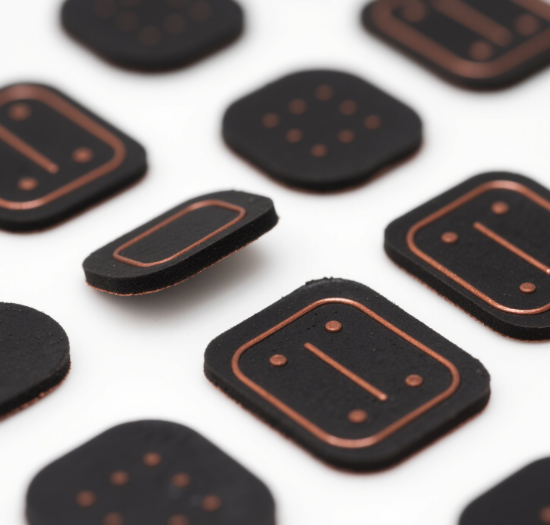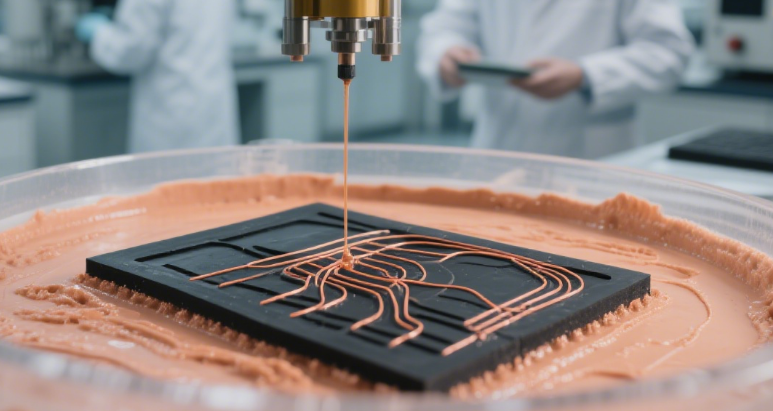Conductive Silicone Rubber in Satellite Communication Equipment
2025/06/16
0
Conductive silicone rubber, a high – performance composite material, has emerged as a key component in satellite communication equipment, playing a crucial role in ensuring reliable and efficient communication in the harsh space environment. This article delves into the characteristics, applications, and advantages of conductive silicone rubber in satellite communication equipment, as well as its future development trends.
1. Characteristics of Conductive Silicone Rubber
1.1 Electrical Conductivity
The most prominent feature of conductive silicone rubber is its electrical conductivity. By incorporating conductive fillers such as carbon black, metal powders (e.g., silver, copper), or carbon nanotubes into the silicone rubber matrix, the material can conduct electricity. This conductivity is adjustable according to different requirements, which is essential for various functions in satellite communication equipment, such as electromagnetic shielding and electrical connection.
1.2 Excellent Sealing Performance
Silicone rubber itself has excellent elasticity and resilience. When made into conductive silicone rubber, it still retains these properties, enabling it to form a tight seal in satellite communication equipment. This is crucial for preventing the ingress of space debris, micrometeoroids, and extreme environmental factors like vacuum, radiation, and temperature fluctuations, which can damage the internal components of the equipment.
1.3 High Temperature and Low Temperature Resistance
Satellite communication equipment operates in a wide range of temperatures in space, from extremely low temperatures in shadow regions to high temperatures when exposed to direct sunlight. Conductive silicone rubber can maintain its physical and electrical properties within a broad temperature range (-60°C – 200°C), ensuring the stable operation of the equipment under these extreme conditions.
1.4 Radiation Resistance
The space environment is filled with various types of radiation, including solar radiation and cosmic rays. Conductive silicone rubber has good radiation resistance, which can effectively prevent the degradation of its performance due to radiation exposure, thus ensuring the long – term reliability of satellite communication equipment.
2. Applications in Satellite Communication Equipment
2.1 Electromagnetic Shielding
In satellite communication, electromagnetic interference (EMI) can seriously affect the quality of communication signals. Conductive silicone rubber is widely used to create electromagnetic shielding gaskets and enclosures. These components can block or absorb external electromagnetic waves, preventing them from interfering with the internal electronic circuits of the satellite communication equipment. At the same time, they can also prevent the electromagnetic signals generated by the equipment itself from leaking out, reducing interference with other equipment in the satellite and on the ground.
2.2 Electrical Connection
Conductive silicone rubber can be used to make flexible electrical connectors. In satellite communication equipment, there are often complex wiring and connection requirements, and traditional rigid connectors may not be suitable due to the limitations of space and the need for flexibility. Conductive silicone rubber connectors can adapt to different shapes and sizes, providing reliable electrical connections while also having good shock and vibration resistance, which is very important for the operation of satellites in the complex space environment.
2.3 Antenna Components
Some antenna components in satellite communication equipment also utilize conductive silicone rubber. For example, in conformal antennas, conductive silicone rubber can be used as a part of the antenna structure, which not only helps to achieve the electrical performance of the antenna but also provides good mechanical support and environmental protection. Its flexibility allows the antenna to conform to the shape of the satellite body, reducing aerodynamic drag and improving the overall performance of the satellite.
2.4 Thermal Management
Conductive silicone rubber with certain thermal conductivity can also be applied to the thermal management of satellite communication equipment. It can be used as a thermal interface material to fill the gaps between components, improving heat transfer efficiency. This helps to dissipate the heat generated by the operation of electronic components in the equipment, ensuring that the components operate within the appropriate temperature range and maintaining the normal operation of the entire satellite communication system.
3. Advantages in Satellite Communication Equipment
3.1 Improved Equipment Reliability
Due to its excellent sealing, electrical conductivity, and environmental resistance, conductive silicone rubber can significantly improve the reliability of satellite communication equipment. By preventing the ingress of external harmful substances, reducing electromagnetic interference, and ensuring stable electrical connections, it minimizes the probability of equipment failure, which is crucial for long – term satellite missions.
3.2 Lightweight Design
Compared with some traditional metallic materials used for similar functions in satellite communication equipment, conductive silicone rubber is lightweight. This is of great significance for satellite design, as reducing the weight of the satellite can save launch costs and improve the payload capacity, enabling the satellite to carry more advanced communication equipment and scientific instruments.
3.3 Cost – effectiveness
Although the initial cost of conductive silicone rubber may be relatively high compared to some common materials, considering its long – service life, low maintenance requirements, and the overall improvement in the performance and reliability of satellite communication equipment, it is cost – effective in the long run. It reduces the frequency of equipment replacement and repair, saving a large amount of maintenance and operation costs.
4. Future Development Trends
4.1 Higher Performance Requirements
With the continuous development of satellite communication technology, higher requirements will be placed on conductive silicone rubber. For example, there will be a greater demand for higher electrical conductivity, better thermal conductivity, and enhanced radiation resistance to meet the needs of more advanced communication systems and longer – term satellite missions.
4.2 Integration with New Technologies
Conductive silicone rubber is likely to be integrated with emerging technologies such as nanotechnology and smart materials. The application of nanomaterials can further improve the performance of conductive silicone rubber, such as enhancing its mechanical strength, electrical conductivity, and thermal conductivity at the nanoscale. Smart conductive silicone rubber with self – sensing and self – repair functions may also be developed, which can detect and repair potential failures in the satellite communication equipment in a timely manner, greatly improving the reliability and autonomy of the equipment.
4.3 Customization and Miniaturization
As satellite communication equipment becomes more miniaturized and customized, conductive silicone rubber products will also need to be designed and manufactured according to specific requirements. Manufacturers will focus on developing conductive silicone rubber with customized shapes, sizes, and performance parameters to better meet the diverse needs of different satellite communication systems.
In conclusion, conductive silicone rubber has become an indispensable material in satellite communication equipment due to its unique characteristics and multiple applications. Its advantages in improving equipment reliability, enabling lightweight design, and being cost – effective have made it widely used. With the continuous progress of satellite communication technology, conductive silicone rubber will face new development opportunities and challenges, and its performance and application fields will continue to be expanded and improved.
















